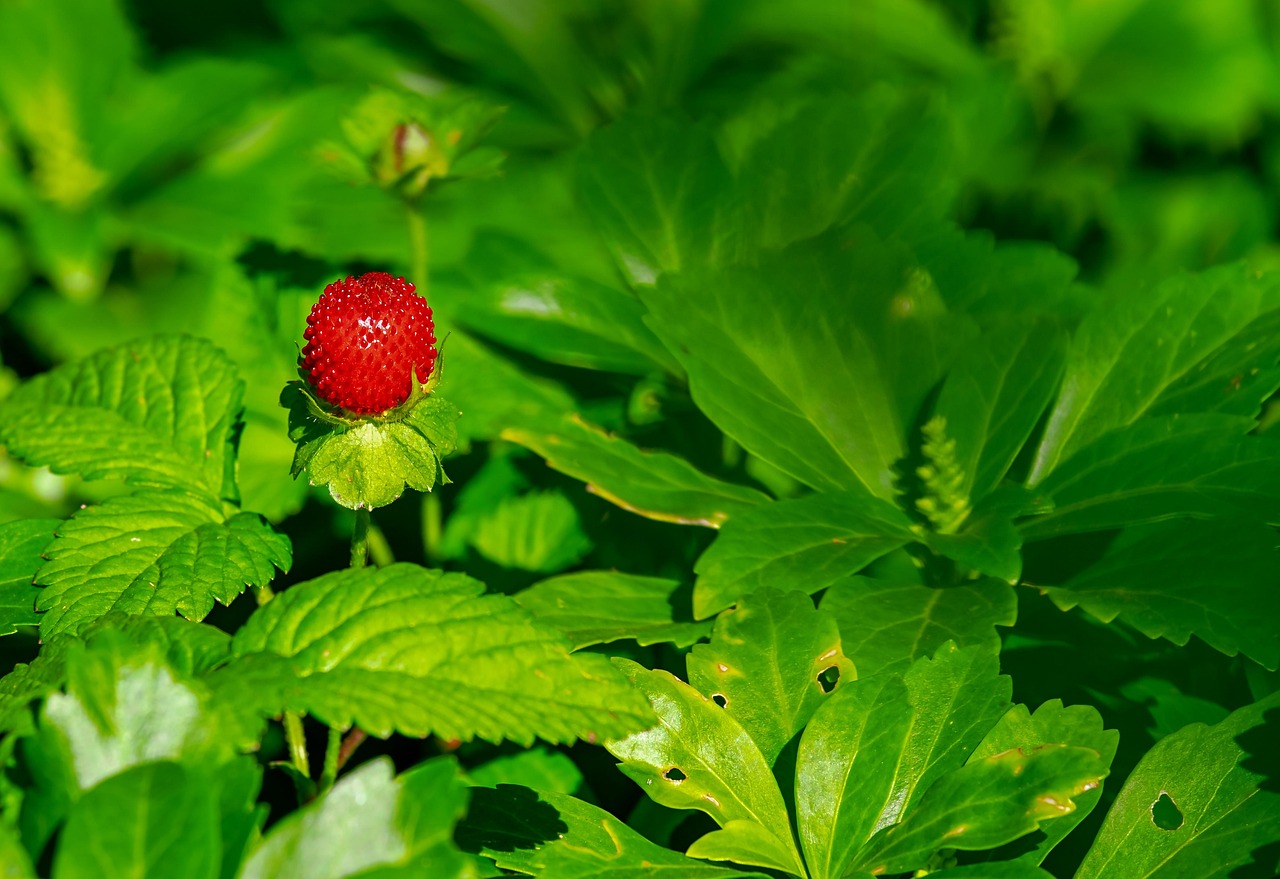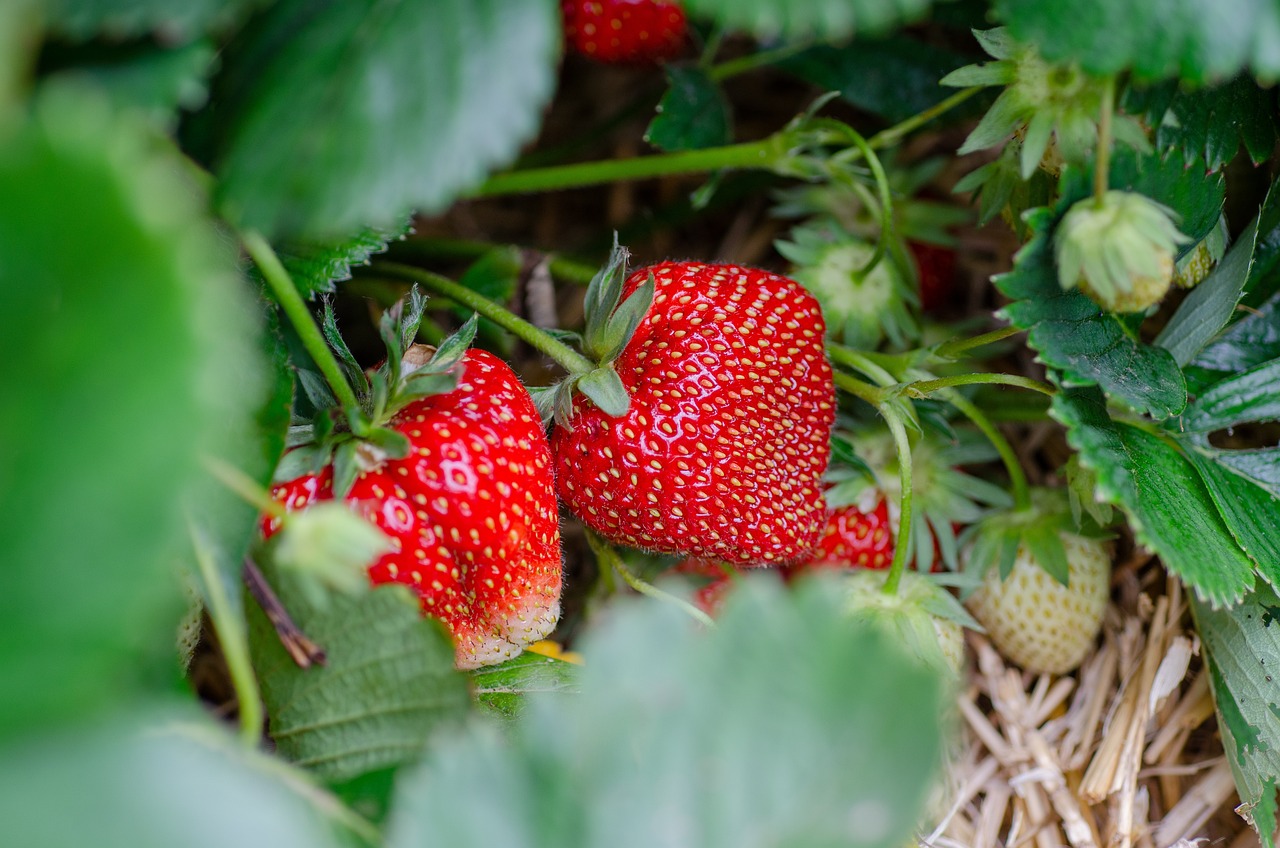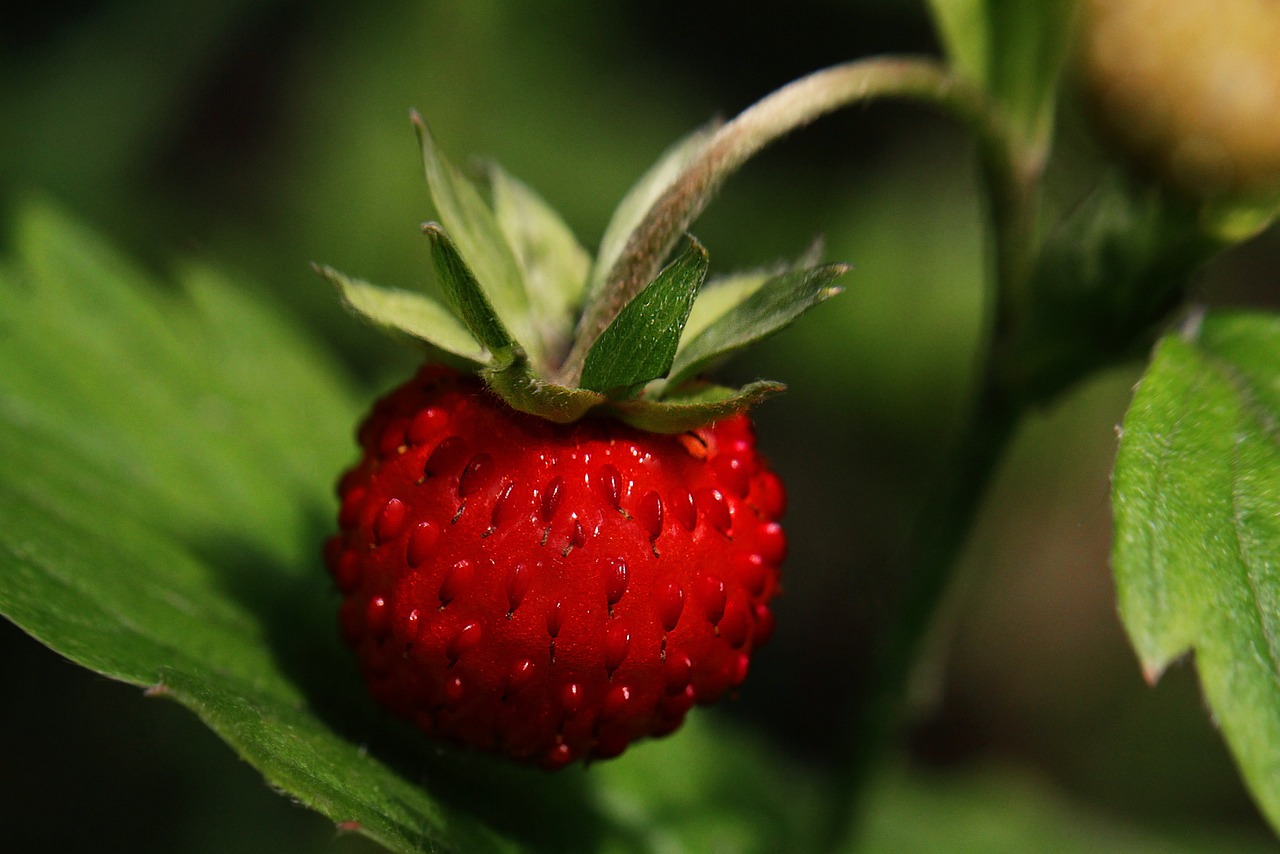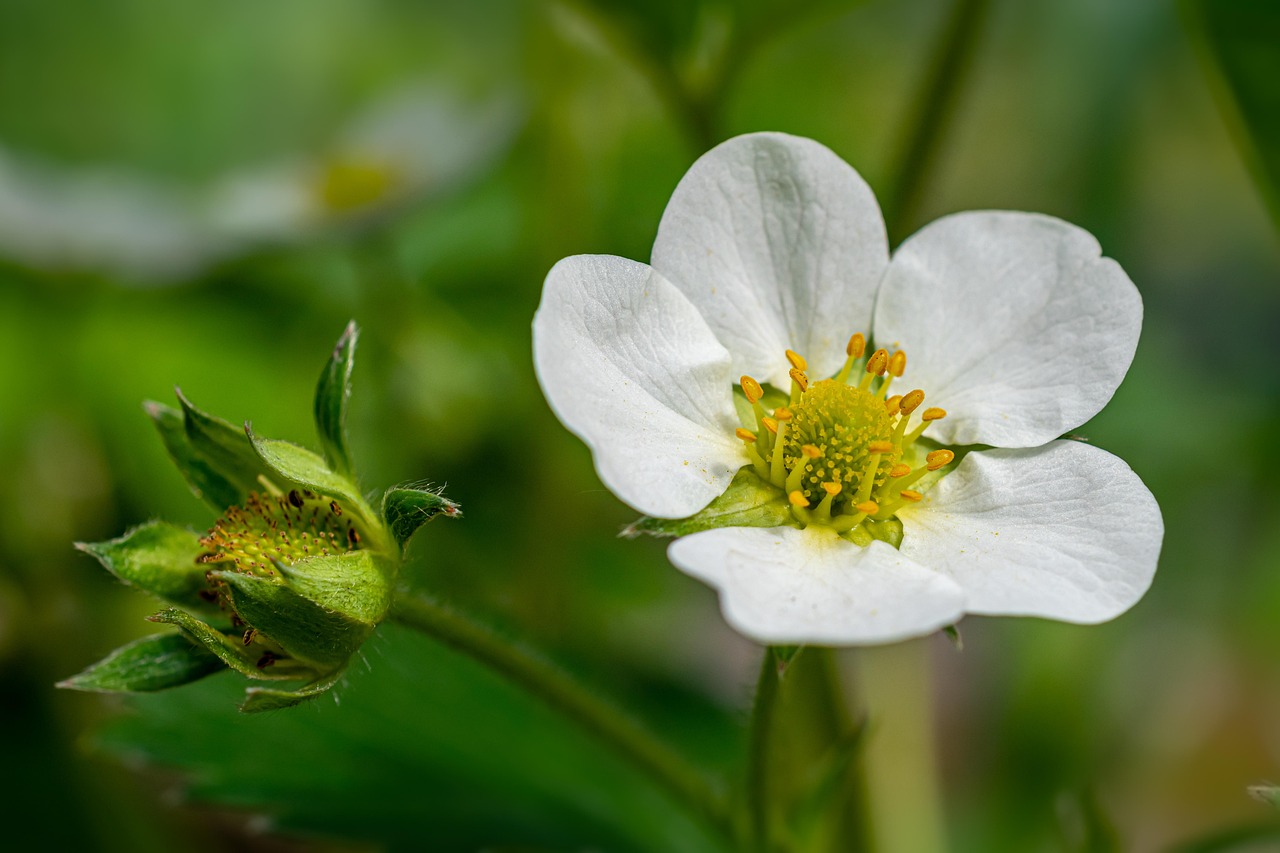Black strawberry leaves can indicate several issues, including fungal diseases, environmental stress, or nutrient deficiencies. Identifying the root cause is essential for effective treatment and prevention to ensure healthy plants and fruitful harvests.
Strawberries are popular garden plants, loved for their delicious fruit and vibrant green foliage. However, growers often face challenges in maintaining their health. One common issue is the leaves turning black, which can be alarming for gardeners. Understanding the potential causes of this condition is important for effective plant care and management.
Strawberries thrive in well-drained soil with adequate sunlight and moisture. However, several factors can lead to the leaves turning black, which may affect the overall health of the plant. These factors include diseases, pests, environmental conditions, and nutrient imbalances. Early detection and intervention can help prevent further damage.
Common Causes of Black Strawberry Leaves

Several reasons can lead to blackening leaves on strawberry plants. Below are some of the most common issues that gardeners should be aware of:
- Fungal Diseases: Various fungi can infect strawberry plants, leading to leaf discoloration. Notable diseases include anthracnose and leaf spot.
- Bacterial Infections: Bacterial blight can cause leaves to darken and die. This often occurs in damp conditions.
- Pest Infestation: Pests like aphids or spider mites can weaken plants, leading to leaf damage and discoloration.
- Nutrient Deficiency: Lack of essential nutrients such as nitrogen or potassium can cause leaves to turn black.
- Environmental Stress: Extreme temperatures or inadequate watering can stress plants, causing leaf issues.
To illustrate the potential causes more clearly, the following table outlines common problems associated with black leaves in strawberry plants:
| Cause | Description | Prevention/Treatment |
|---|---|---|
| Fungal Diseases | Infections like anthracnose lead to dark spots on leaves. | Use fungicides and ensure good air circulation. |
| Bacterial Infections | Bacterial blight can cause wilting and blackening. | Remove affected leaves and avoid overhead watering. |
| Pest Infestation | Pests such as aphids suck sap from leaves, leading to discoloration. | Use insecticidal soap or neem oil for control. |
| Nutrient Deficiency | Lack of nitrogen or potassium can result in dark leaves. | Apply a balanced fertilizer regularly. |
| Environmental Stress | Extreme heat or cold can cause leaf damage. | Provide shade or insulation as needed. |
Recognizing these issues early can aid in prompt treatment. Regular monitoring of your strawberry plants is crucial. Check for signs of disease, pest presence, and environmental conditions that could contribute to leaf problems. With the right approach, it is possible to maintain healthy strawberry plants and enjoy a bountiful harvest.
Identifying Symptoms of Blackening Leaves
To address the issue of black leaves on strawberry plants effectively, it is essential to identify specific symptoms associated with each potential cause. Understanding these symptoms can help you pinpoint the problem and choose the right course of action.
Fungal Diseases
Fungal infections often manifest in various ways on strawberry leaves. The following symptoms are indicative of fungal diseases:
- Dark Spots: Small dark spots that expand over time can indicate anthracnose. These spots may also have a yellow halo.
- Wilting Leaves: Infected leaves may droop or wilt, often leading to their eventual death.
- Leaf Drop: Severe infections can cause leaves to drop prematurely, impacting the plant’s overall health.
Bacterial Infections
Bacterial infections present distinct symptoms that can be recognized early. Look for the following signs:
- Water-soaked Spots: Leaves may develop dark, water-soaked areas that will eventually turn black.
- Leaf Curling: Affected leaves may curl or distort as the infection progresses.
- Rapid Decline: Bacterial blight can cause quick deterioration of plant health, necessitating immediate action.
Pest Infestation
Pests can weaken strawberry plants and contribute to leaf discoloration. Recognizing pest activity is crucial for managing the health of your plants. Signs include:
- Sticky Residue: The presence of honeydew, a sticky substance excreted by aphids or other sap-sucking insects, can indicate an infestation.
- Visible Pests: Look for pests on the undersides of leaves, including aphids, spider mites, and whiteflies.
- Leaf Damage: Leaves may show signs of chewing or stippling from pest activity.
Environmental Factors Contributing to Black Leaves
Environmental conditions play a significant role in the health of strawberry plants. Several factors can lead to blackening leaves, and it is important to monitor these aspects closely.
Temperature Extremes
Strawberry plants are sensitive to temperature variations. Extreme heat or cold can result in stress, leading to blackened leaves. Key points to consider include:
- Heat Stress: Prolonged exposure to high temperatures can scorch leaves, resulting in darkening and wilting.
- Frost Damage: Unexpected frosts can freeze young leaves, causing them to turn black and die off.
Watering Practices
Water management is crucial for strawberry plant health. Incorrect watering techniques can lead to leaf problems. Consider these factors:
- Overwatering: Excess water can suffocate roots and promote fungal diseases, causing leaves to turn black.
- Underwatering: Insufficient moisture can lead to stress and wilting, resulting in discoloration.
Nutrient Management for Healthy Strawberry Plants
Nutrient imbalances can significantly affect the health of strawberry plants. Ensuring adequate nutrition is vital for preventing black leaves. Here are some important considerations:
Essential Nutrients
Strawberry plants require a balanced supply of nutrients for optimal growth. Key nutrients include:
- Nitrogen: Essential for leaf development; a deficiency can lead to yellowing and darkening of leaves.
- Potassium: Important for overall plant health; a lack can result in weak plants prone to disease.
- Calcium: Supports cell wall structure; deficiencies may lead to poor leaf quality.
Soil Testing
Regular soil testing is a proactive approach to ensure your strawberry plants receive the appropriate nutrients. Testing helps determine:

- Nutrient Levels: Identifies any deficiencies or excesses in soil nutrients.
- pH Balance: Ensures that the soil pH is within the optimal range for strawberries, typically between 5.5 and 6.5.
Adequate nutrient management, along with careful monitoring of environmental conditions and pest presence, is essential for maintaining healthy strawberry plants. By understanding the symptoms and causes of blackening leaves, gardeners can take effective measures to promote plant health and productivity.
Preventive Measures for Healthy Strawberry Plants

Preventing issues that lead to blackening leaves in strawberry plants is crucial for maintaining their health and productivity. By implementing proactive strategies, gardeners can reduce the risk of diseases, pest infestations, and nutrient deficiencies. The following sections will discuss various preventive measures that can be taken.
Proper Planting Techniques
The foundation of healthy strawberry plants starts with proper planting techniques. Consider the following guidelines:
- Site Selection: Choose a location with full sunlight, good drainage, and protection from strong winds. This helps prevent stress and diseases.
- Soil Preparation: Amend the soil with organic matter, such as compost, to improve its structure and nutrient content.
- Spacing: Ensure adequate spacing between plants to promote air circulation, reducing humidity levels that can encourage fungal growth.
Watering Practices
Watering is a critical aspect of strawberry plant care. Proper watering techniques can prevent stress and disease:
- Deep Watering: Water deeply but infrequently, allowing the soil to dry out slightly between waterings. This encourages strong root growth.
- Avoid Overhead Watering: Use drip irrigation or soaker hoses to minimize water on foliage. This reduces the risk of fungal diseases.
- Monitor Soil Moisture: Regularly check soil moisture levels to ensure plants receive adequate hydration without becoming waterlogged.
Pest Management Strategies
Effective pest management is essential for preventing blackening leaves. Implement the following strategies:
- Regular Inspections: Routinely check plants for signs of pests or damage. Early detection allows for timely intervention.
- Companion Planting: Grow companion plants that repel pests or attract beneficial insects. For example, marigolds can deter aphids.
- Natural Predators: Encourage natural predators like ladybugs and lacewings that feed on harmful pests.
Fungal and Bacterial Disease Control
To prevent fungal and bacterial diseases, gardeners should adopt various cultural practices and treatments. Here are some effective strategies:
Cultural Practices
Cultural practices play a vital role in disease prevention:
- Crop Rotation: Rotate strawberry crops with non-susceptible plants to break disease cycles.
- Sanitation: Remove and dispose of any infected plant material to minimize pathogen spread.
- Mulching: Use organic mulch to suppress weeds, maintain moisture, and reduce soil splash onto leaves during rain or irrigation.
Fungicide and Bactericide Application
If diseases are detected or conditions are favorable for their development, consider using chemical treatments:
- Fungicides: Apply fungicides labeled for use on strawberries at the first sign of disease to protect healthy foliage.
- Bactericides: Use bactericides to manage bacterial infections, especially in wet conditions when the risk is heightened.
Nutrient Management for Growth Optimization

Nutrient management is integral to preventing black leaves caused by deficiencies. Implement the following practices to ensure balanced nutrition:
Regular Fertilization
A well-planned fertilization schedule can significantly improve plant health:
- Use Balanced Fertilizers: Select fertilizers that provide a balanced ratio of nitrogen, phosphorus, and potassium tailored for strawberries.
- Follow Application Guidelines: Adhere to recommended application rates and timings based on the growth stage of the plants.
- Organic Options: Consider using organic fertilizers like fish emulsion or seaweed extract to enhance soil health and plant vigor.
Soil Health Improvement
Maintaining healthy soil is essential for nutrient availability:
- Add Organic Matter: Incorporate compost or well-rotted manure into the soil to enhance its structure and nutrient-holding capacity.
- Aerate the Soil: Periodically aerate the soil to improve drainage and root penetration, ensuring that nutrients reach the plants effectively.
Implementing these preventive measures can significantly reduce the likelihood of blackening leaves in strawberry plants. By focusing on proper planting techniques, effective watering practices, pest management, disease control, and nutrient optimization, gardeners can create an environment where strawberry plants thrive and produce healthy fruit.
Managing Seasonal Changes and Their Effects
Seasonal changes can significantly impact the health of strawberry plants and contribute to issues like blackening leaves. Understanding these seasonal variations is crucial for effective management. Here are some factors to consider:
Spring Care
In spring, as temperatures rise and plants begin to grow, it is essential to monitor for early signs of disease and pests. Key practices include:
- Fertilization: Apply a balanced fertilizer as new growth begins to ensure adequate nutrient supply.
- Pest Monitoring: Inspect plants regularly for aphids and other pests. Early intervention can prevent infestations.
- Water Management: Ensure consistent watering practices as plants wake from dormancy, avoiding fluctuations that could stress them.
Summer Vigilance
During the summer months, strawberries can face heat stress and increased pest activity. To mitigate these challenges:
- Mulching: Use organic mulch to retain moisture and keep root temperatures stable.
- Irrigation: Increase watering frequency during dry spells, but avoid waterlogged conditions by allowing soil to dry out between watering.
- Shade Protection: Provide shade during extreme heat to prevent leaf scorch.
Autumn Preparation
As autumn approaches, preparation for winter is vital. Consider these strategies:
- Harvesting: Ensure all fruit is harvested before the first frost to prevent damage to the plants.
- Disease Prevention: Remove dead or diseased foliage to minimize the risk of overwintering pathogens.
- Soil Amendments: Apply compost or organic fertilizers to enrich the soil before winter.
Winter Care
During winter, strawberry plants enter dormancy. However, they still require care:
- Protection from Frost: Cover plants with straw or fabric to protect them from harsh frost.
- Draining Soil: Ensure soil drainage is adequate to prevent waterlogging and root rot during thawing periods.
Final Thoughts
Maintaining healthy strawberry plants requires diligence, attention to detail, and a proactive approach. Blackening leaves can be a symptom of various underlying issues, including diseases, pests, nutrient deficiencies, and environmental stressors. By implementing proper planting techniques, effective watering practices, pest management strategies, and nutrient optimization, gardeners can create an environment conducive to healthy growth.
It is essential to monitor plants regularly for signs of distress, especially during seasonal transitions when conditions can change rapidly. Early detection of problems allows for timely interventions, reducing the risk of widespread damage. Additionally, adapting care strategies as seasons change helps ensure that strawberry plants remain robust and productive throughout their growing cycles.
With proper care and attention, gardeners can enjoy thriving strawberry plants that not only produce delicious fruit but also contribute beauty to their gardens. By understanding the causes of blackening leaves and taking preventive measures, you can cultivate a healthy strawberry patch that flourishes year after year.
